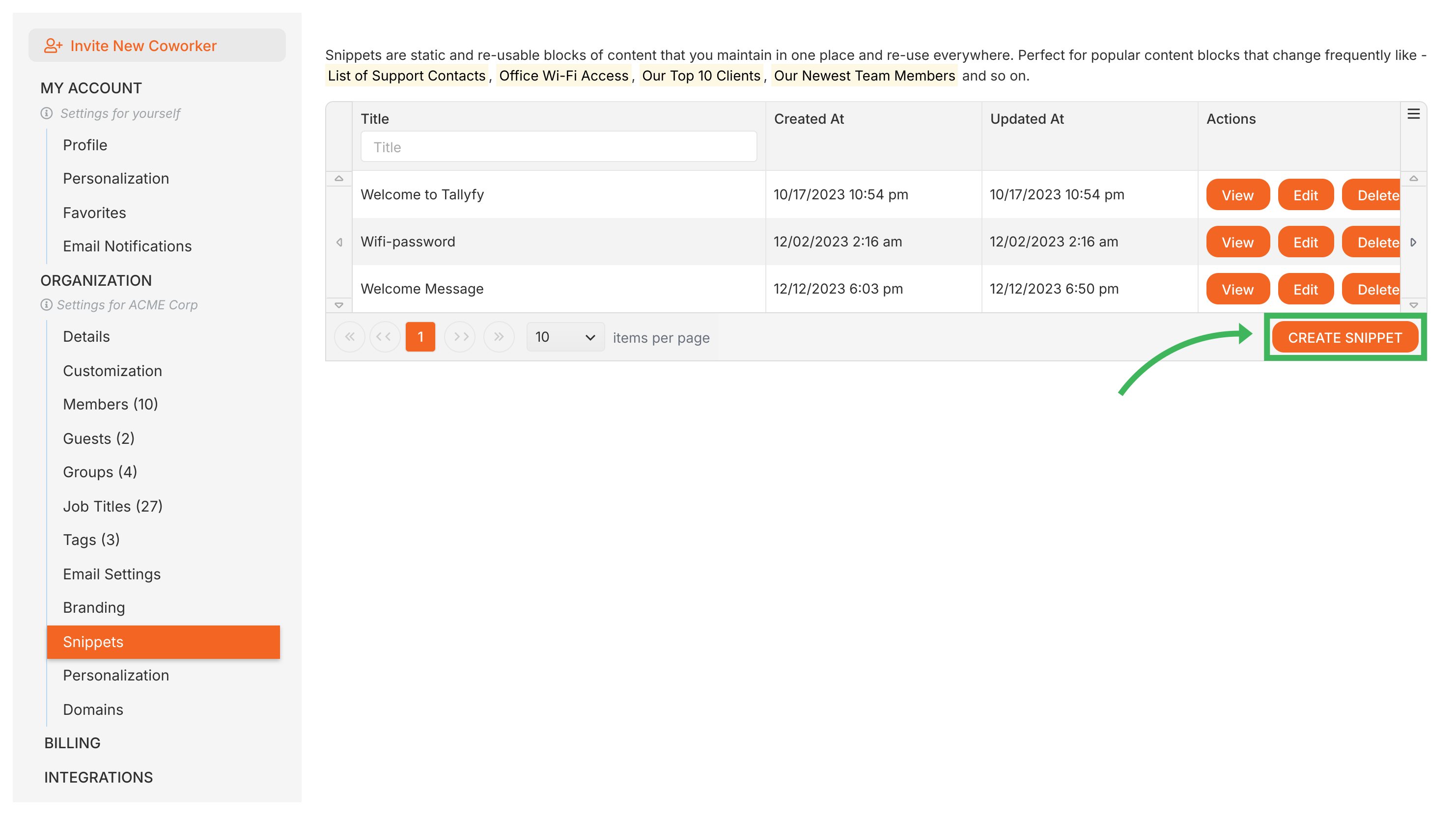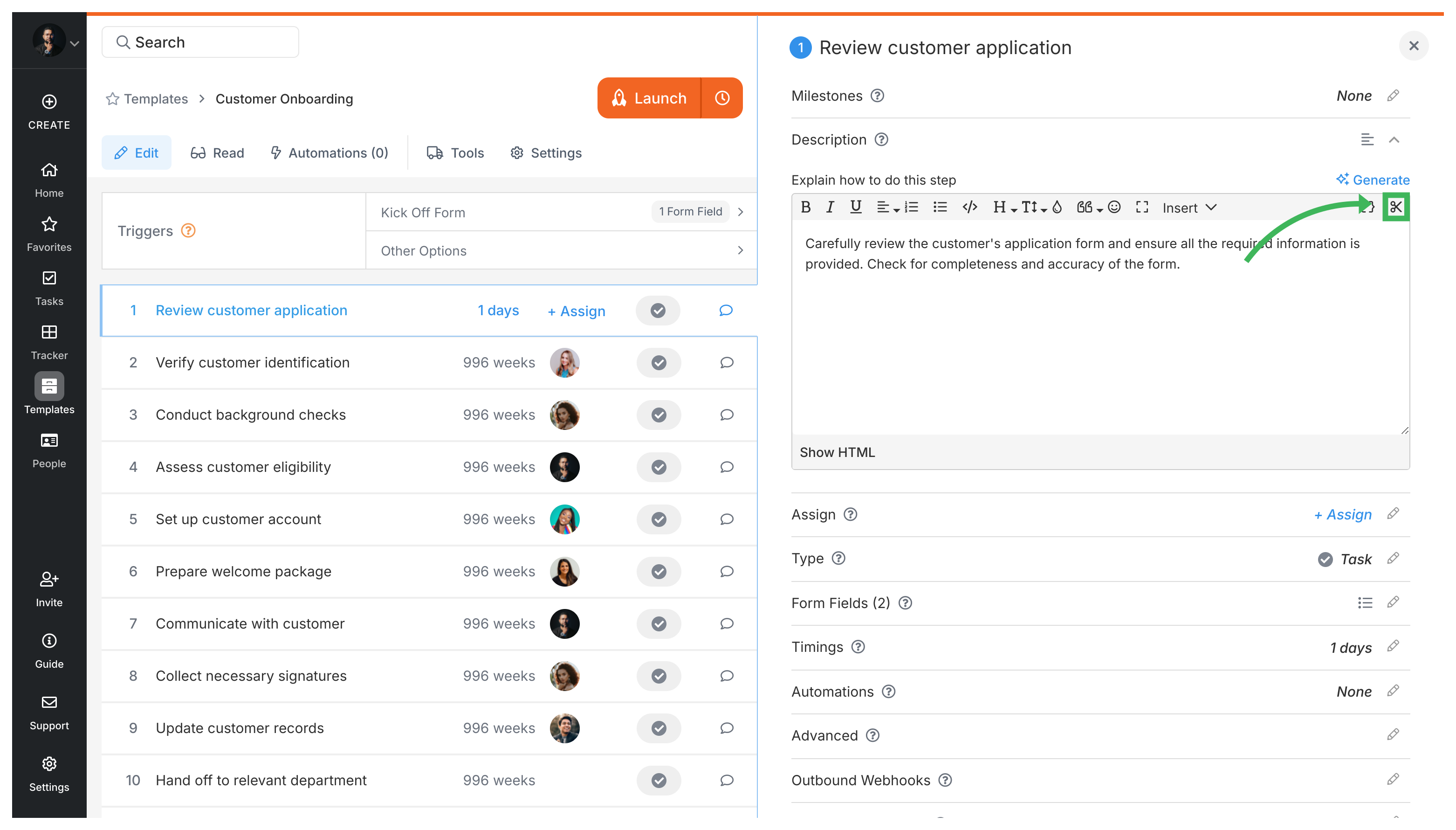Use snippets
To use snippets in Tallyfy, click the Snippets icon (✂️) in any text editor and select the text block you want to insert. Snippets are reusable text blocks you create once and insert anywhere - template steps, task descriptions, comments, and more.
You can use snippets to avoid typing the same compliance disclaimer 50 times or to ensure everyone uses the correct phone number.
- Administrators create, edit, and delete snippets for the whole organization
- Everyone else can insert existing snippets wherever they’re editing text (like task descriptions or comments)
- Go to Settings > Organization > Snippets (Note: This path might vary slightly; look for Snippets under Organization settings).
- Click Create Snippet.
- Give the snippet a clear, descriptive Title so you can find it easily later.
- Type or paste the text Content you want to reuse into the main box.
- Use the formatting tools (bold, lists, etc.) if needed.
- Click Save.

In the Snippets settings page, you can:
- View all snippets at a glance
- Edit any snippet (changes update everywhere instantly1)
- Delete outdated snippets
- Organize them into categories - “HR Policies”, “Legal Disclaimers”, “Contact Info”, whatever makes sense for your team
When editing text in Tallyfy, insert a snippet by:
- Click where you want the snippet text to appear.
- Click the Snippets icon (looks like scissors ✂️) in the editor toolbar.
- Choose the snippet you want from the list that appears.
- The snippet’s content will be inserted right where your cursor was.

You can use snippets anywhere you see the text editor toolbar in Tallyfy:
- Template descriptions and step descriptions
- Guidance text for form fields (perfect for those “Please enter your employee ID in format XXX-XXX” instructions)
- Launch instructions - those special notes people see before starting a process
- Task comments when you’re collaborating
- Process notes
- Document template content
You can link to entire templates using the snippet tool. For example, if your workflow mentions “Follow the IT Security Checklist here,” embed a link to that template instead of copying its content. When the checklist updates, your reference stays current.
- Click where you want the template link.
- Click the Snippets icon (✂️).
- Choose the Templates option.
- Select the template you want to link to.
- A link to that template will be inserted.
Use this for standard operating procedures, compliance checklists, or processes that connect to other processes.
Name snippets descriptively. Use “Legal disclaimer for contracts” instead of “Legal text 1” to find them easily later.
Keep snippets short. A three-paragraph warranty disclaimer works well. An entire employee handbook doesn’t.
Create single sources of truth. If a support phone number appears in 12 processes, make it a snippet. Update once when it changes.
Organize with categories. After 20+ snippets2, organize them into categories like “Customer Communications”, “Legal Requirements”, or “Technical Instructions”.
Schedule reviews. Check quarterly or biannually that snippets remain current and relevant.
Was this helpful?
- 2025 Tallyfy, Inc.
- Privacy Policy
- Terms of Use
- Report Issue
- Trademarks